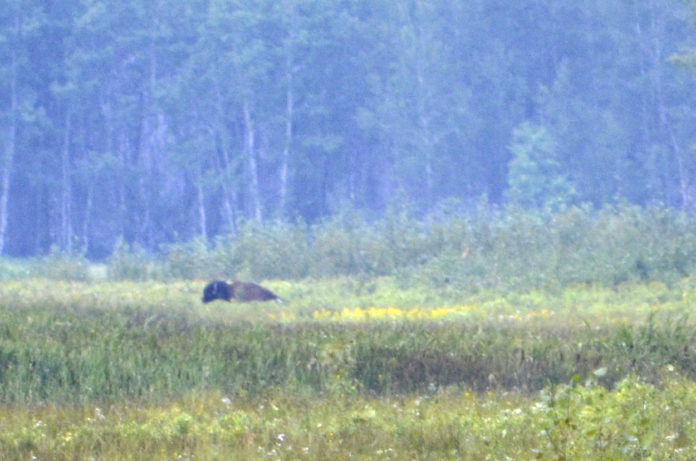By Bailey Sutherland
A study by a Quebec university says Prince Albert National Park’s free-roaming bison could go extinct within 50 years. Due to overhunting, disease, and predation, the bison population within the park has dropped to just 120 and will continue without proper intervention. If no changes are made, the population is projected to have an 80 per cent extinction rate.
PhD student from Laval University in Quebec and co-author of the bison study, Ricardo N. Simon, says the bison are falling into an ecological trap.
“This occurs when animals are tricked into using an area that looks, smells, sounds or feels good to them, but that in reality is actually dangerous,” he said.
The bison spend most of their time in the park, but in the early summer months when the farmers begin to cut their crops, the animals will leave the park to feed on the freshly cut grass. Once they are out of the park, bison are exposed to hunting by First Nations. Some local farmers that are tired of dealing with the damage the bison cause to their crops grant hunting permission in their fields. This creates a deadly combination for bison.
“Based on our records, the population reached a maximum of about 500 bison in 2004 and is now down to around 120. What is maintaining population at the lowest level, you know, the only reason, is legal bison hunting by first nations people”, said Daniel Fortin, ecologist and co-author of the Prince Albert National Park bison study.
The bison herd in Prince Albert National Park is significant; in it is one of the few on the continent that continues to evolve due to predation by the bison’s natural predators while simultaneously contributing to traditional use by the First Nations.
“This fairly unique combination of characteristics makes this herd extremely valuable both ecologically and culturally”, said Simon.
Worried by the steady decline, a number of organizations have partnered together to try and manage a sustainable population for the bison. The Sturgeon River Bison Stewards, a non-profit local organization made up of local ranchers and farmers, along with Prince Albert National Park, the Government of Saskatchewan, and the first nations groups from the surrounding area are already working together to solve this issue.
They have put up electric fences on trails used by bison to leave the park, an intervention that succeeded in reducing the amount of time bison spent outside the park by 50 per cent in 2018. Other solutions proposed include informational sessions with the ranchers that own land surrounding Prince Albert National Park, one-on-one meetings with the local Indigenous communities, and looking to institute the Indigenous Guardianship Program.
This pilot program supports Indigenous rights and responsibilities in protecting and conserving ecosystems by giving Indigenous peoples stewardship of their traditional lands. The goal is to have Indigenous people on the ground around the park on a daily basis interacting with the bison and having the ability to speak directly with the hunters.
Alongside the guardianship program, local Indigenous communities are being encouraged to sign the Buffalo Treaty. Several First Nations in Canada and the US have already signed this treaty designed to bring buffalo back to the landscape and renew the relationship between the Indigenous nations and the bison that has been ongoing for time immemorial.
Mistawasis First Nations, the first Treaty 6 nation to sign the treaty, has taken the initiative of pushing other Indigenous communities to do the same.
Gord Vaadeland, executive director of the Canadian Parks and Wilderness Society, believes the solution to the decline lies with the First Nations communities.
“The Buffalo Treaty and the Indigenous Guardianship program are two vehicles that we can use to really be productive in that and really turn what is right now an unbalanced relationship into a very healthy one”.


